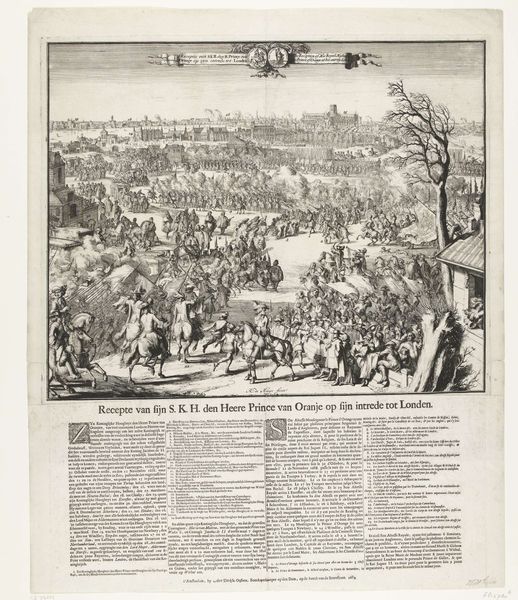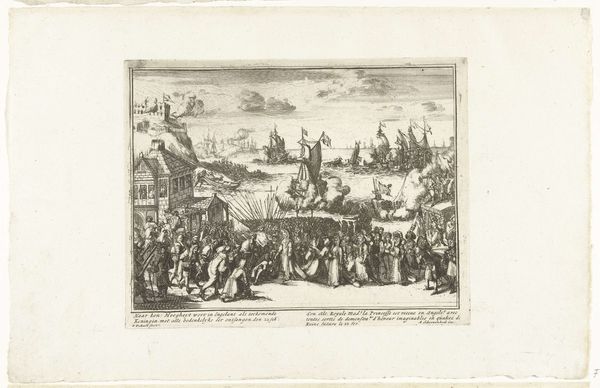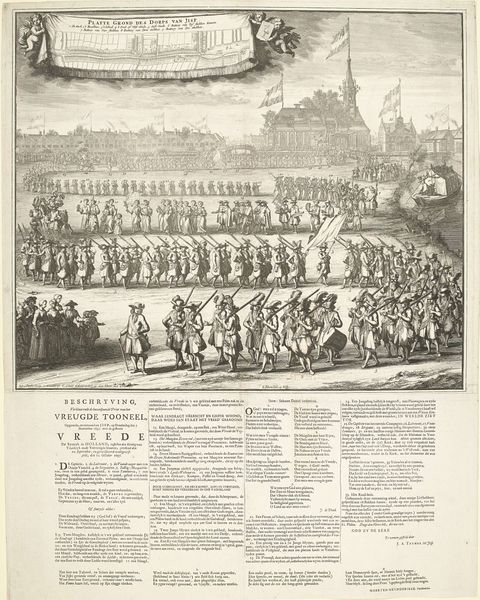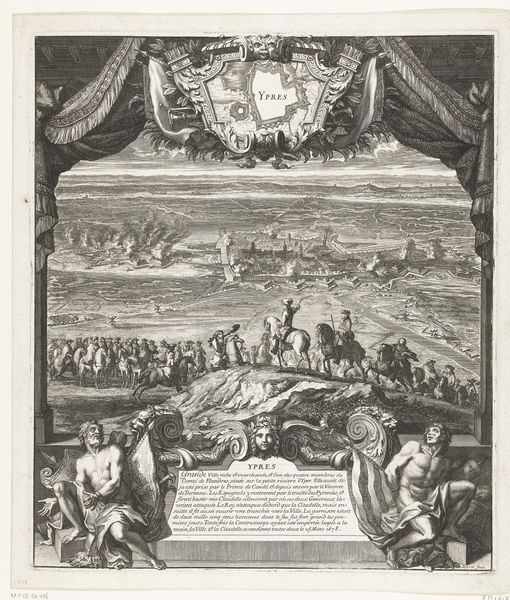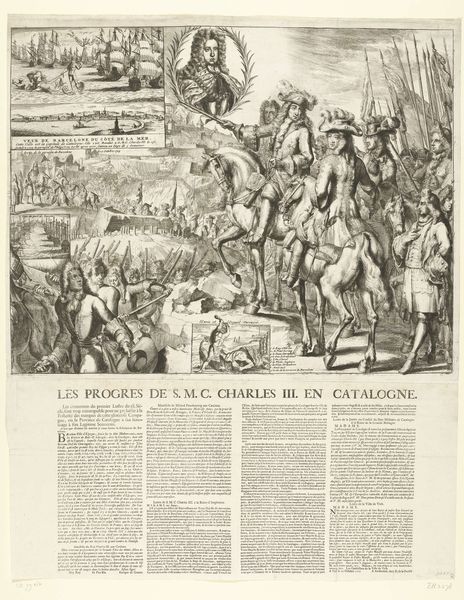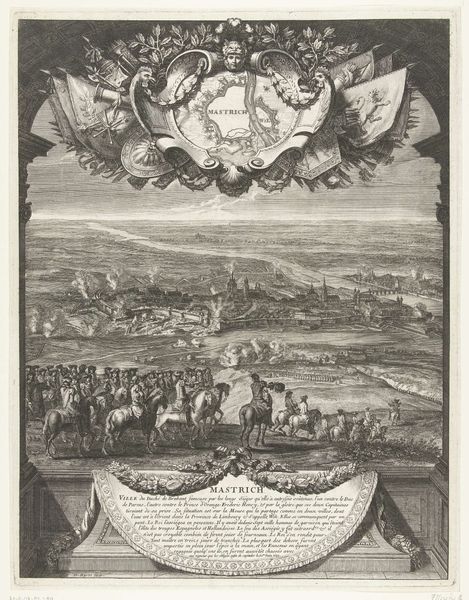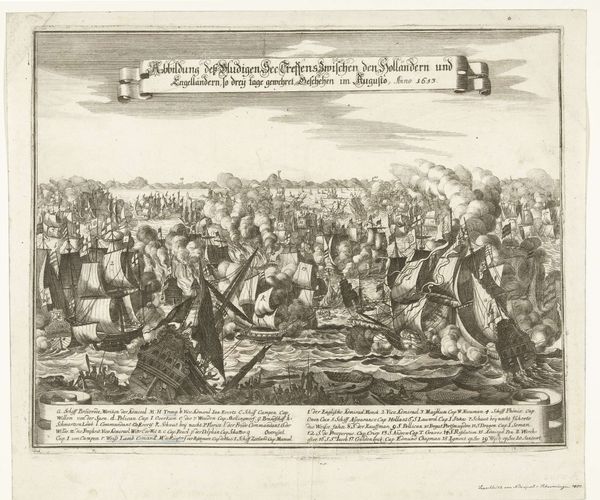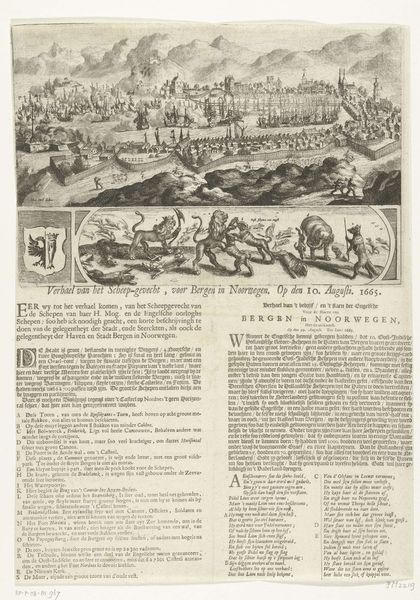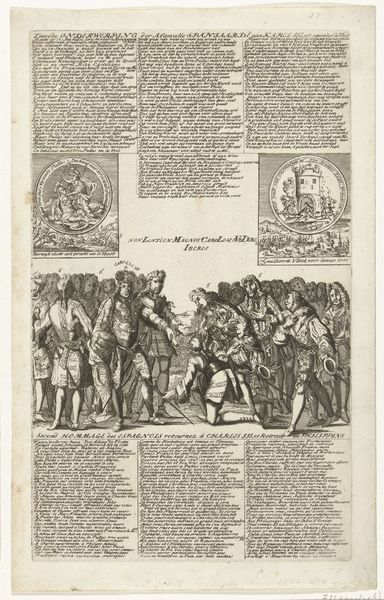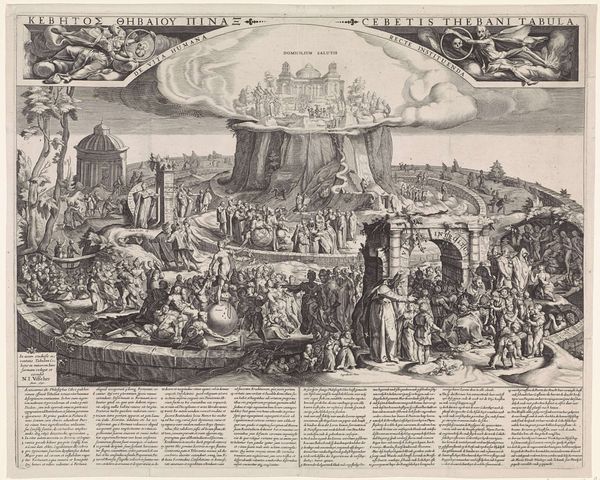
Ontvangst van de prinses van Oranje als koningin van Engeland, 1689 1689
0:00
0:00
romeyndehooghe
Rijksmuseum
print, engraving
#
narrative-art
#
baroque
# print
#
cityscape
#
history-painting
#
engraving
Dimensions: height 740 mm, width 588 mm
Copyright: Rijks Museum: Open Domain
Romeyn de Hooghe's etching from 1689 commemorates the arrival of the Princess of Orange as Queen of England. It offers a window into the complex political landscape of the late 17th century. The print, made in the Netherlands, captures the moment when Princess Mary, wife of William of Orange, arrived in England to jointly claim the throne, an event known as the Glorious Revolution. De Hooghe uses symbolic visual codes to portray this moment as a triumph of Protestantism and Dutch influence over English affairs. Dutch artists found themselves at the intersection of political upheaval, using their skills to shape public opinion and celebrate the shifting power dynamics. As historians, we delve into archives and political pamphlets to unravel the intricate web of motivations, alliances, and power struggles that shaped this historical moment. The image is not just a depiction of an event but an active participant in the shaping of its meaning.
Comments
No comments
Be the first to comment and join the conversation on the ultimate creative platform.
